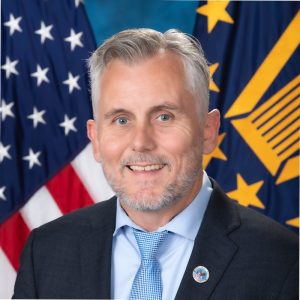Nathan Tierney is the Deputy CIO and Chief People Officer for the Office of Information Technology (OIT) in the Department of Veterans Affairs (VA). His resume is long and distinguished: veteran of the Army Special Forces, roughly five years in private sector leadership roles and author of books on health care value management, among other achievements.
We asked him about the lessons he’s learned during his nearly nine years at the VA.

How do you keep up with evolving technology?
Technology is an enabler, Tierney believes. It’s an agnostic tool that helps you achieve your desired outcome. But if you don’t have the journey from process to result mapped in advance, you can make faulty assumptions about what certain technology can do for you. Avoid “racing ahead of technology,” he said.
Tierney is working with HR staff to evaluate the performance potential of current systems and processes, so that people ultimately have technology that allows them to complete newly authorized HR tasks effectively. Tierney said it goes back to his mantra of “policy, process, performance, people.”
In the early days of the pandemic shutdown, OIT didn’t struggle like other agencies and departments did. “I think we were in a much better place,” he said, because many staff already worked remotely, at least in part, and because OIT had an end-user support team that easily could mail out laptops, for instance.
“We were pretty well-positioned, [but] I think where … we got caught off-guard was on [measuring] this thing called ‘productivity,’” he said. In terms of AI, the evolving tech that everyone is talking about, Tierney said he “has some pretty distinct opinions on this whole push” for it.
How do you translate policy into management goals?
Tierney said that to execute what otherwise would be a “dead policy document,” he develops journey maps that reveal pain points, bright spots and areas of potential innovation on the way to achieving a desired outcome.
But in addition to policy and process, Tierney stressed the need to gauge performance — “I’m a big data guy,” he acknowledged — and care for people. That’s where he struggled when transitioning into government after careers in the military and the private sector.
His background made him believe “that you have to standardize … how you receive, analyze and disseminate information” and that putting “numbers on the board” to drive better performance made sense, he said. His government team became defensive, however, because he never explained his rationale and because data transparency can be uncomfortable.
“My lesson learned … is [that now] I try to look at measuring the health of the workforce [to] take us to the next level,” he said. “I’ve really paused now that I’m in this role to take the time to explain the why.”
How do you create an environment where employees feel like they belong?
Tierney asks people what he needs to improve, then he goes about fixing the problems. “I want to be judged by my actions, not my words,” he said.
Each month he holds a town hall meeting with his internal team, and each quarter he organizes a larger, share-holder-type town hall so people can air concerns. He fields 30 or more questions at each event and reports on his progress with addressing issues they previously raised.
Tierney also creates journey maps for each stage of his agency’s employee experience, from recruitment to retirement, and uses feedback from employee engagement surveys and other sources to identify pain points and resolve them.
He began conducting exit interviews and learned, for instance, that people very often received their service awards more than two years after they should have. “Think about that,” he said.
Now, 90% of all service awards appear in people’s mailboxes the month they’re due. And by reading the fine print in department policies, Tierney learned that as a senior executive, he can give on-the- spot financial awards for good performance — so he does. He also tells people about career opportunities: “I feel like I owe it to [them] to paint that picture,” he explained.
“If you say you’re going to put people first, prove it,” Tierney said.
This article appears in our guide, “Conversations With CXOs: Lessons Learned in Management, Workforce and Technology.” For more insights from the C-suite, download it here:





Leave a Reply
You must be logged in to post a comment.